Hydrangea in pots on the windowsill
Home hydrangea is the queen of window sills, its flowering beauty is not inferior to a rose. To give the room a bright, beautiful look, it is grown not only as a garden plant, but also as an indoor crop.Lush inflorescences look great in any interior; with the help of culture, they accentuate the most interesting areas of the room.
| Content:
|
Indoor hydrangea is miniature; when grown at home, it barely reaches 1 m in height. From 1 to 8 inflorescences are formed above the upper leaves of the shoots. The fewer panicles, the larger each of them (up to 30 cm). Unlike garden crops, the flowering balls of potted hydrangea have brighter and more varied colors.
Depending on the pH value of the soil mixture, the color can be snow-white, blue, pink, purple, light green, or beige. Wide leaf blades of juicy, emerald color. The buds of the crop are colorless; the sepals give the plant a decorative appearance, and they are also responsible for the shade of the inflorescence. The flowers of the crop have no aroma and do not attract bees and other insects.
|
Bright representatives of home hydrangea |
“House hydrangea is a subspecies of the plant introduced to Europe in the 14th century. Initially intended for the wealthy segments of the population. Luxurious inflorescences were associated with wealth and the special position of the owner.
Common varieties for indoor growing
Home varieties of hydrangea are dwarf subspecies of garden varieties. There are about 80 varieties of the crop, some of them are intended for growing indoors. Varieties of large-leaved hydrangea are suitable for home maintenance.
- "MissSaori" – a large subshrub, height and width reach 100 cm.Shoots with pink inflorescences are highly branched.
|
In the photo there is an indoor hydrangea “Miss Saori” |
- "Ramars Mars" - a miniature variety, the inflorescence size is no more than 20 cm. Over time, the ends of the petals acquire a yellowish-greenish tint.
Hydrangea Ramars Mars. The variety requires constant pruning.
- “Madame Mouillere” - a spherical, spherical bush with glossy, narrowed leaves. The inflorescences are long-lived, dense, usually white.
In the photo "Madame Mouillere".
- “Soeur Therese” – the bush blooms early, in the first half of June. Height up to 40 cm with spherical white inflorescences and small, dark green leaves.
"Soeur Therese"
- "Europe" - a medium-sized, no more than 50 cm ornamental bush with large leaves.
|
The photo shows the hydrangea "Europe". A distinctive feature is the blue tint of the petals |
- “Red Sensation” is a spreading, dense bush with glossy, bright green leaves. If the recommended acidity is observed, the flowers will be red.
|
The photo shows the variety Red Sensation |
- "Bavaria" – blooms from June to October. Shrub up to 1.5 m high.
|
Variety Bavaria. The inflorescences are large, up to 20 cm, bloom profusely, the color of the petals is blue. |
- "Hamburg" – characterized by lush flowering. The buds are large, 4-5 cm in diameter. The length of the shoots is 30-45 cm.
|
"Hamburg" |
Growing and caring for home hydrangeas in pots
What conditions should be created for indoor hydrangeas?
Homemade varieties of hydrangea are capricious and demanding in terms of living conditions and require compliance with growing rules.
Lighting
Indoor hydrangea loves bright spaces, but does not tolerate direct sunlight. If exposed to ultraviolet light, white spots appear on the leaves - burns.When growing on a windowsill, take into account the location of the window. On the south, south-east side they are placed at a distance of 2-3 m. If necessary, create additional shading. In the spring and summer, it is better to move the hydrangea pot to a loggia or balcony, protecting it from sunlight.
Temperature
The optimal temperature for growing hydrangeas at home is 18-22 °C. The flower does not tolerate drafts; when ventilated, it is removed from the windowsill. The plant needs rest; a dormant period is artificially created for the winter. The pot is moved to a darker, cooler place with a temperature of 7-9°C. Leaves fall. During this period, the crop is left alone, only the soil is monitored, and watered as it dries.
It is optimal to store the flower in the basement, cellar, or on a glazed, insulated balcony. To bring a hydrangea out of dormancy, just place it in a bright, warm room and water it.
Humidity
Should be moderate. You should not place a pot of hydrangea next to radiators. During the heating season, the edges of the leaves dry out - an indicator of low humidity and dry air. Regular spraying with a spray bottle with the addition of 5 drops of lemon juice per 1 liter of liquid is recommended. When sprayed with hard tap water, whitish spots will appear on the leaves. You should first freeze the water and use melted water.
|
Splendor on the windowsill |
“To increase humidity, place the container in a tray with water. This will ensure constant evaporation of moisture.
Pot for indoor hydrangeas
Hydrangea is sold in small pots, in which care is impossible; replanting is required immediately after purchase. The container is chosen based on the size of the pet.The root system is superficial, so the pot must be wide. In order not to cause stagnation of water, not to provoke root rotting and the development of diseases, choose a container for replanting that is not deep.
The pot should have large drainage holes at the bottom. Hydrangeas require annual replanting; each subsequent container should be larger and more voluminous than the previous one.
|
The pot should be wide and not deep |
Priming
The culture loves sourness and does not accept alkaline soil. Land with high acidity (pH 6) will ensure good growth and vigorous, vibrant flowering. It’s easier to buy ready-made soil for hydrangeas or a universal flower one. It is immediately ready for use and has a crumbly structure without large elements. Contains an optimal ratio of nitrogen, phosphorus, potassium. You can make your own soil mixture using the following components:
- high peat;
- lime flour;
- compost;
- garden soil;
- a little sand;
- perlite
The finished soil mixture is loose and fertile.
Features of planting home hydrangeas in pots
The root system of a seedling purchased from a nursery is compressed, with roots intertwined. The baby will not be able to straighten the roots on his own and will take a long time to grow new ones. Therefore, before the procedure, it is recommended to “gut” the earthen ball and trim the roots, this will activate the growth of the root system.
- Drainage (expanded clay) is poured into the container in a layer 2 cm thick.
- Fill the container 2/3 with soil and water a little.
- Distribute the soil to the side walls of the pot to form a hole.
- The bush is installed in the resulting recess.
- Gently holding the stem, cover it with soil to the desired level, without covering the root collar. You shouldn't press it too hard. The top is mulched with peat.
- After planting, it is enough to spray with a spray bottle; watering begins the next day.
Planting a seedling
Plant care
Indoor hydrangea is considered a capricious crop; it is important to take into account certain nuances. With proper agricultural technology, the flower will delight you with its healthy appearance, decorativeness and lush flowering.
Watering
Potted hydrangeas need to be watered quite actively; the plant is moisture-loving. The water should be at room temperature. Due to calcium salts, tap water is not suitable. You should use settled boiled water, so the liquid will become softer and free of chlorine. In summer, watering is carried out regularly and abundantly, in winter and autumn it is moderate. To soften the liquid, once every 2 weeks, it is useful to add lemon juice (5 drops per 1 liter of liquid) or citric acid on the tip of a knife. Additionally, green mass is sprayed.
“Under natural growing conditions, in Japan and Southeast Asia, heavy rains occur during the flowering period of hydrangea. From the beginning of the formation of inflorescences, at home, plants are watered every 2-3 days!
Top dressing
Additional nutrition for indoor hydrangeas is necessary, since the soil in the pot is not renewed and becomes scarce over time. The health of your pet directly depends on timely feeding. They stimulate the abundant appearance of large inflorescences with rich colors, the flowering process is longer, and resistance to diseases increases.
Hydrangeas are suitable for azaleas and rhododendrons. They begin to “feed” in February, when new shoots are formed, and stop at the end of September to give time to prepare for wintering. In February, nitrogen-containing preparations begin to be used; they stimulate the growth of green mass.During the spring, add ammonium sulfate or ammonium nitrate (1 tsp per 1 liter of water). Responds well to nutrition with organomineral fertilizers with humates (“Gumin”).
Feeding is changed at the beginning of flowering. Nitrogen-containing fertilizers are canceled, and potassium-phosphorus fertilizers begin to be introduced: potassium sulfate, potassium magnesium, potassium monophosphate. In September-early October, feeding is stopped to prepare the plant for the dormant period.
Trimming
The procedure is mandatory for rejuvenation, the formation of a compact seedling and the uniform distribution of nutrients from the soil.
In autumn, faded inflorescences are removed to the nearest pair of leaves. When the plant goes dormant, weak shoots are cut out at the root.
In order for the bush to have a compact, branched, round, spherical shape with a large number of inflorescences, formative pruning is carried out, consisting of two stages:
- When two pairs of true leaves form on a young annual bush, the top is pinched, stimulating the growth of lateral shoots from the remaining buds.
- The procedure is repeated on new side shoots, stimulating the growth of young third-order stems. By the end of the season, flower buds are laid on them.
Having carried out this pruning, in one season you get a bush with many side shoots, on which many flowers will appear next year.
Transfer
To obtain new nutrients, the hydrangea seedling is transplanted annually into a larger pot. The root system grows decently over the season, the next container should be larger in size than the previous one.
In order not to cause stress, replanting is carried out in the spring, by transferring from one pot to another.A 2 cm layer of drainage is poured onto the bottom of the new container, the seedling is removed from the old pot along with a lump of earth and placed in a new container. Pre-prepared soil mixture is filled into the voids and backfilled from above to the root collar. Ready-made soil can be purchased at the store or prepared independently by mixing the components used when planting the crop. The transplanted pet is watered abundantly.
|
Transplanting indoor hydrangea into a new pot |
Propagation of hydrangeas at home
The lifespan of indoor hydrangea is only 3-4 years. It is not difficult to obtain additional copies of your favorite flower; it is enough to acquire cuttings or seeds of a propagated specimen.
Cuttings
Planting material is harvested in January-February. Choose powerful, basal shoots and cut them into 8-9 cm cuttings so that they have 2-3 internodes. The base is cut at an angle of 45°C. The lower leaves are removed, the upper ones are shortened by half.
The cuttings with the lower cut are placed in a solution of a root formation stimulator (“Kornevin”, “Epin”) for 2 hours. For rooting, plant them in the ground 3 cm deep and carefully water them. The optimal composition of the soil mixture is high-moor peat, sand, in a ratio of 2:1. Containers with green pets are placed in a lighted, warm place. For better survival and creating a greenhouse effect, the cuttings are covered with cut plastic bottles or glass jars. Ventilate daily, removing covers for 10-15 minutes, watering is done once a week with settled water. After a month, the babies are ready to be transplanted into separate cups.
In warm weather, for hardening, the nursery with seedlings is taken outside or placed near an open window.The flower stalks formed on the babies are removed in order to direct forces to the development of the root system.
|
Planting harvested cuttings |
Propagation by seeds
They use both their own planting material and purchased seeds. Seeds are collected in dry weather before frost and stored in paper bags or fabric bags until sowing. Do not use old, moldy, frozen, sluggish seeds. Germination will be zero.
“Ripe seeds, ready for sowing, are oblong, small, dark brown, brown-black in color. Light - not mature enough, not suitable for sowing.
For disinfection, before sowing, dry seeds are soaked for several hours in a weak solution of potassium permanganate. Afterwards, they are placed in a solution of the growth stimulator “Epin” for a day.
To germinate seeds, they are placed in damp gauze or a cloth. When white roots appear, begin sowing.
In February-March, containers with drainage holes are filled with soil mixture and planting material is laid out. Lightly press into the ground and sprinkle with sand or peat on top. Gently moisten with water from a spray bottle, cover with glass and film. Before emergence, the nursery is regularly ventilated and watered as the soil dries with soft, settled water. 2-3 weeks after sowing, the first shoots appear. When 2-3 true leaves appear, the babies are picked into separate cups. When they reach 8 cm in length, the sprouts are replanted a second time.
|
Nursery with seedlings |
Pests and diseases
Failure to follow the agricultural techniques for growing potted hydrangeas will cause a lot of problems for the owner. A weak plant is susceptible to disease and is readily attacked by pests.
Spider mites and aphids. Infected by pests in insufficient humidity and dry air.Treatment with soap solution and fungicides “Karbofos” and “Aktellik” helps to get rid of insects.
Gray rot and powdery mildew. Appear from excessive air humidity. Hydrangea is treated with Bordeaux mixture against gray rot, and powdery mildew is treated with copper-containing preparations.
Nematode. The seedling dries out in a short period. The disease cannot be treated and the bush is destroyed.
Possible problems with home hydrangea
When growing hydrangea at home, it is important to follow the necessary rules of agricultural technology, otherwise gardeners face a number of problems:
Blackening, curling of leaves. A sign of fertilizer overdose. The pot should be flushed with running water to remove excess chemicals from the soil.
Chlorosis. Occurs if the pet lives in insufficiently acidic soil. The leaf blade becomes lighter, indicating a lack of iron. The soil is acidified and foliar fertilized with iron chelate.
Blackening and drying of leaves. Indicator of root rotting in excessively wet soil. Stop watering and allow the soil to dry.
Yellowing of leaves. It is observed with a lack of watering and nitrogen. You should water generously and observe the plant. If the bush has not “recovered” and has not acquired a healthy, emerald color, nitrogen-containing preparations are given.
Lack of flowering. The owner of a potted hydrangea must provide the flower with the necessary rest period by placing it in a dark, cool room for 2-3 months. If you leave the seedling awake during the winter months, it will not have the strength to form flower stalks.
“The original feature of hydrangea is the change in color of the petals, depending on the excess of one or another element in the soil.Thus, an increased content of lime produces pink petals; with an excess of aluminum, the flowers become blue.
|
Hydrangea affected by chlorosis |
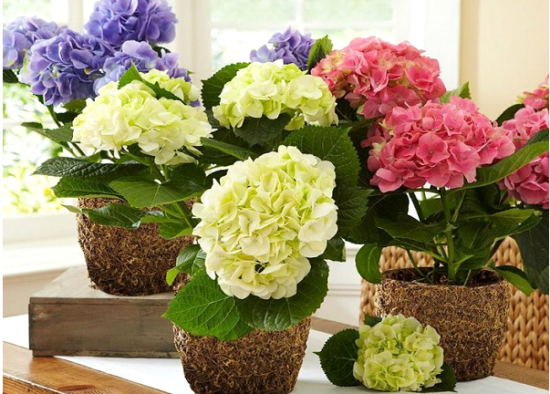
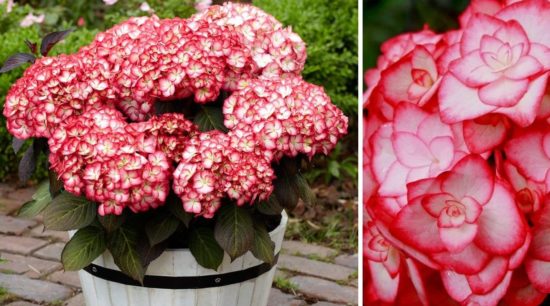
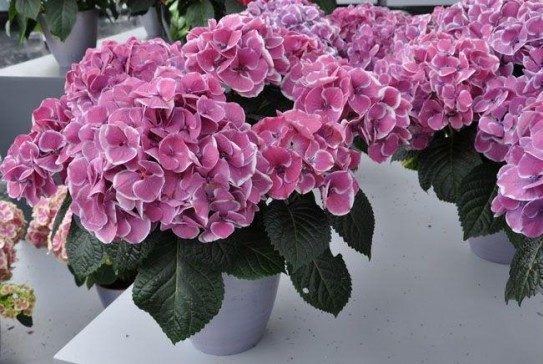
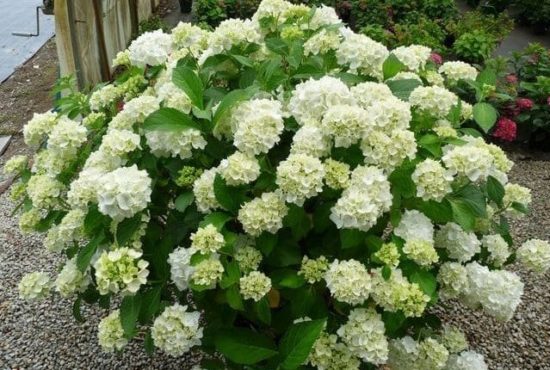
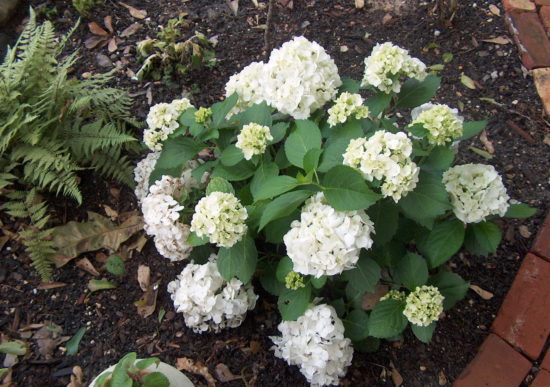
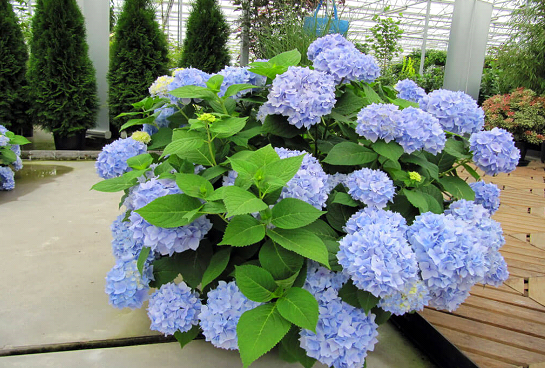
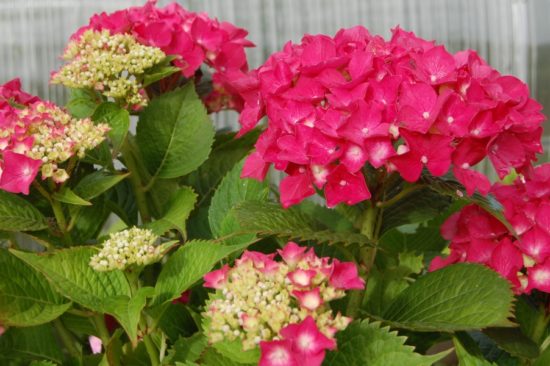
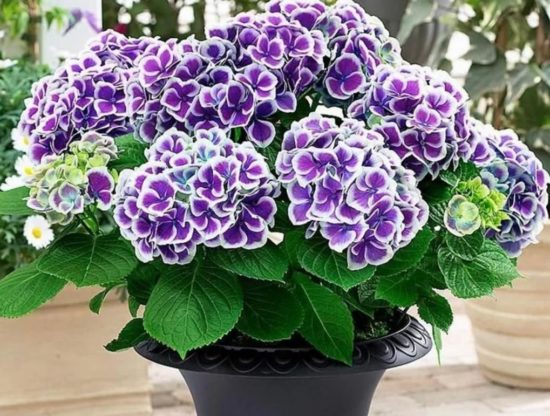

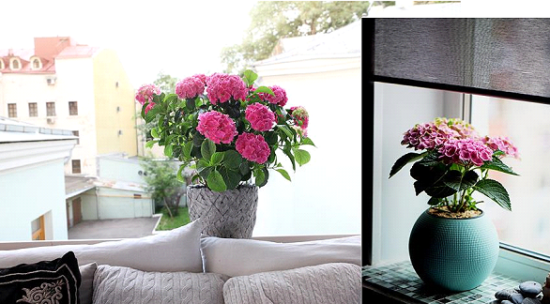
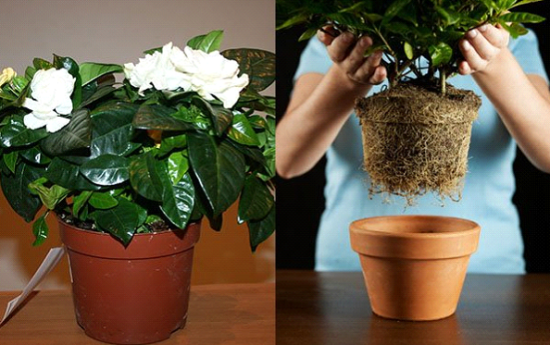
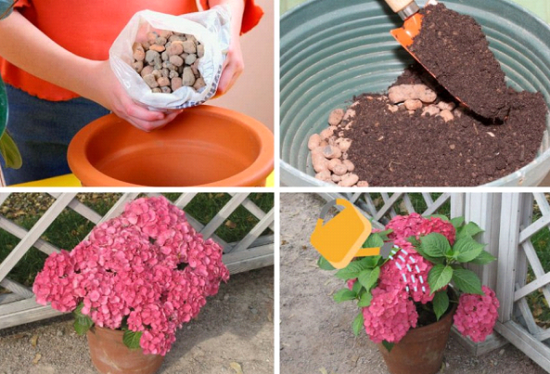
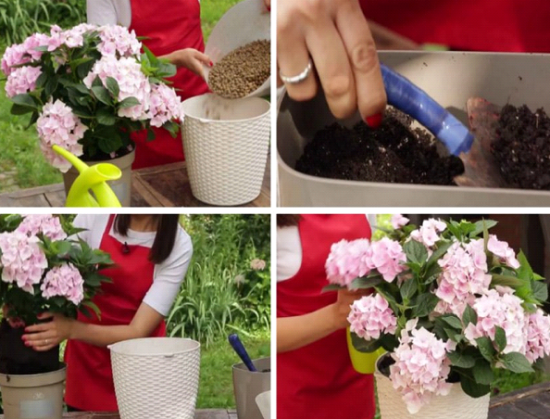
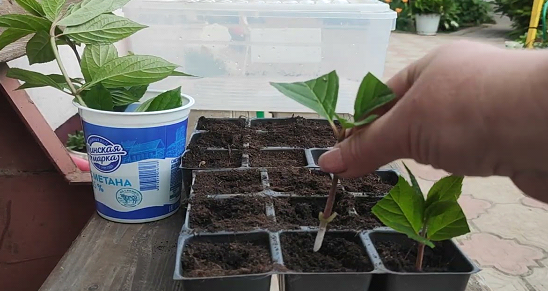

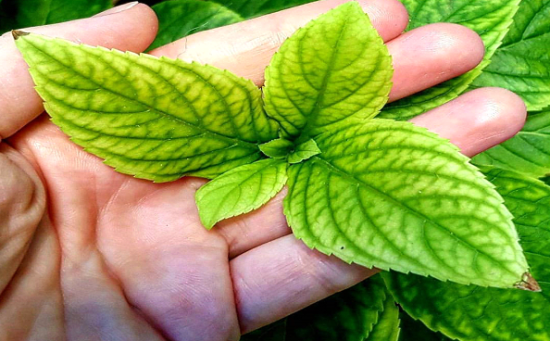

 CUCUMBERS NEVER GET SICK, I'VE BEEN USING ONLY THIS FOR 40 YEARS! I SHARE A SECRET WITH YOU, CUCUMBERS ARE LIKE THE PICTURE!
CUCUMBERS NEVER GET SICK, I'VE BEEN USING ONLY THIS FOR 40 YEARS! I SHARE A SECRET WITH YOU, CUCUMBERS ARE LIKE THE PICTURE! You can dig a bucket of potatoes from each bush. Do you think these are fairy tales? Watch the video
You can dig a bucket of potatoes from each bush. Do you think these are fairy tales? Watch the video
 How our fellow gardeners work in Korea. There is a lot to learn and just fun to watch.
How our fellow gardeners work in Korea. There is a lot to learn and just fun to watch. Eye trainer. The author claims that with daily viewing, vision is restored. They don't charge money for views.
Eye trainer. The author claims that with daily viewing, vision is restored. They don't charge money for views. A 3-ingredient cake recipe in 30 minutes is better than Napoleon. Simple and very tasty.
A 3-ingredient cake recipe in 30 minutes is better than Napoleon. Simple and very tasty. Therapeutic exercises for cervical osteochondrosis. A complete set of exercises.
Therapeutic exercises for cervical osteochondrosis. A complete set of exercises. Which indoor plants match your zodiac sign?
Which indoor plants match your zodiac sign? What about them? Excursion to German dachas.
What about them? Excursion to German dachas.